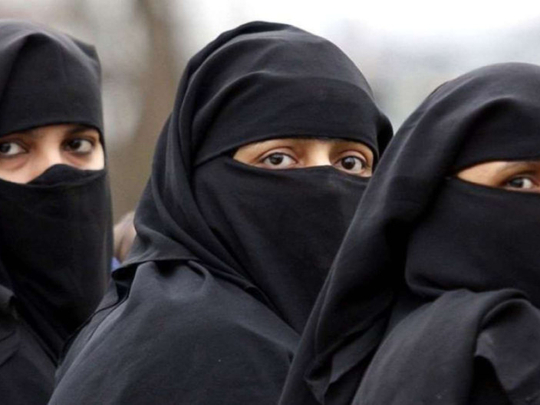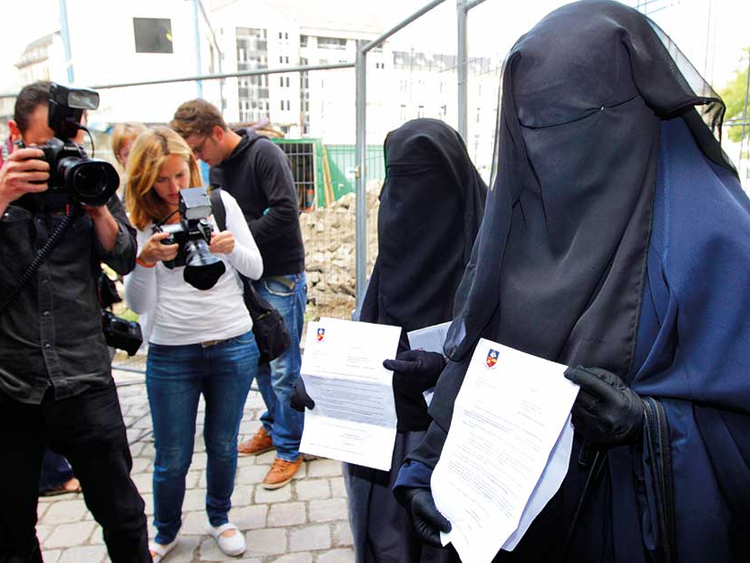
STRASBOURG, France: The European Court of Human Rights on Tuesday upheld a Belgian ban on wearing the full-face niqab veil in public.
The court ruled that the restriction sought to guarantee social cohesion, the “protection of the rights and freedoms of others” and that it was “necessary in a democratic society”, a statement said.
It said a by-law adopted in June 2008 in the three municipalities of Pepinster, Dison and Verviers “could be regarded as proportionate to the aim pursued, namely the preservation of the conditions of ‘living together’ as an element of the ‘protection of the rights and freedoms of others’.”
The court said a country should also be given a “wide margin of appreciation in deciding whether and to what extent a limitation of the right to manifest one’s religion or beliefs was ‘necessary’.”
Belgium banned the wearing of the full-face veil under a June 2011 law. It prohibits appearing in public “with a face masked or hidden, in whole or in part, in such a way as to be unidentifiable”.
Violations can result in fines and up to seven days in jail.
France was the first European country to ban the niqab in April 2011.
The European Court of Human Rights had already ruled on a challenge to the French law in 2014 when it also rejected arguments that the restriction breached religious freedom and individual human rights.
'Free will'
The Belgian case was brought by two Muslim women, Samia Belcacemi, a Belgian national, and Yamina Oussar, a Moroccan.
Both women said they chose of their own free will to wear the niqab and claimed their rights had been infringed and the law was discriminatory.
After Belgium introduced the ban, Belcacemi continued wearing the veil for a while but stopped because of social pressure and fears she would be fined.
Oussar told the court that she had decided to stay at home, the statement from the court said.
In August 2008, Dakir had filed an application at the Belgium’s Conseil d’Etas — the country’s constitutional court — for the ban to be lifted but it dismissed the case on a technicality.
The ECHR however said that decision was “excessively formalistic” and ordered Belgium to pay her 800 euros (Dh3,275) in costs and expenses.
Full-face ban in Europe
The full-face veil, or niqab, is a hot-button issue across Europe, with different policies in different countries. The European Court of Human Rights upheld Tuesday a Belgian ban on wearing the niqab in public.
Belgium
The wearing of the full veil is regulated by a 2011 law that bans "appearing in places accessible to the public with a face masked or hidden, in whole or in part, in such a way as to be unidentifiable".
Britain
There is no law restricting the wearing of garments for religious reasons. However, in March 2007 the education ministry published directives allowing directors of public establishments and denominational schools to ban the niqab veil.
France
France was the first European country to ban the full-face veil in public spaces with a law that took effect in 2011. The European Court upheld the French burqa ban in 2014, rejecting arguments that outlawing full-face veils breached religious freedom. The law has resulted in around 1,600 arrests since it came into force. Violations can result in fines of up to 150 euros ($170).
Germany
German lawmakers have approved a partial ban on "covering the face". According to the legislation civil servants and officials, including judges and soldiers, must have their faces uncovered, and people can also be required to remove facial coverings in order to match them with their identity papers.
Italy
A 1975 law aimed at protecting public order makes it illegal to cover the face in public places but courts have systematically thrown out local moves to use the ban to outlaw the full-face veil. Two regions held by the anti-immigrant Northern League, Lombardy and Venetia, have banned the burqa and full face veil in hospitals and public places.
Spain
The country's highest court annulled in 2013 a ban on the full-face veil in public buildings that had been decided three years earlier by the northeastern region of Catalonia.













